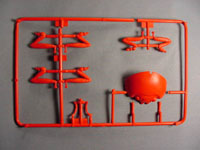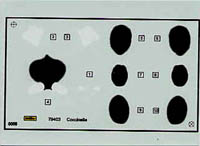
 The Kit
The Kit The Build
The Build My daughter successfully assembled the three main head/body parts, though the fit was vague. Decals followed - these turned out to be a chore for Dad. Even though they were going on over glossy surfaces with no seams, the decals had trouble settling down over the bug's compound curves. There were ten individual decals - too many for my daughter’s patience. While Dad struggled with Microset and an old T-shirt, my daughter launched into a fantasy monologue about Captain Poopdeck and some sea turtles. Despite the patience and Microset, some decals silvered.
My daughter successfully assembled the three main head/body parts, though the fit was vague. Decals followed - these turned out to be a chore for Dad. Even though they were going on over glossy surfaces with no seams, the decals had trouble settling down over the bug's compound curves. There were ten individual decals - too many for my daughter’s patience. While Dad struggled with Microset and an old T-shirt, my daughter launched into a fantasy monologue about Captain Poopdeck and some sea turtles. Despite the patience and Microset, some decals silvered. underside, but the pins on the legs were flimsy and the holes on the body were too small. After the holes were enlarged, the legs snapped in, but they flopped around randomly.
underside, but the pins on the legs were flimsy and the holes on the body were too small. After the holes were enlarged, the legs snapped in, but they flopped around randomly. Conclusion
Conclusion